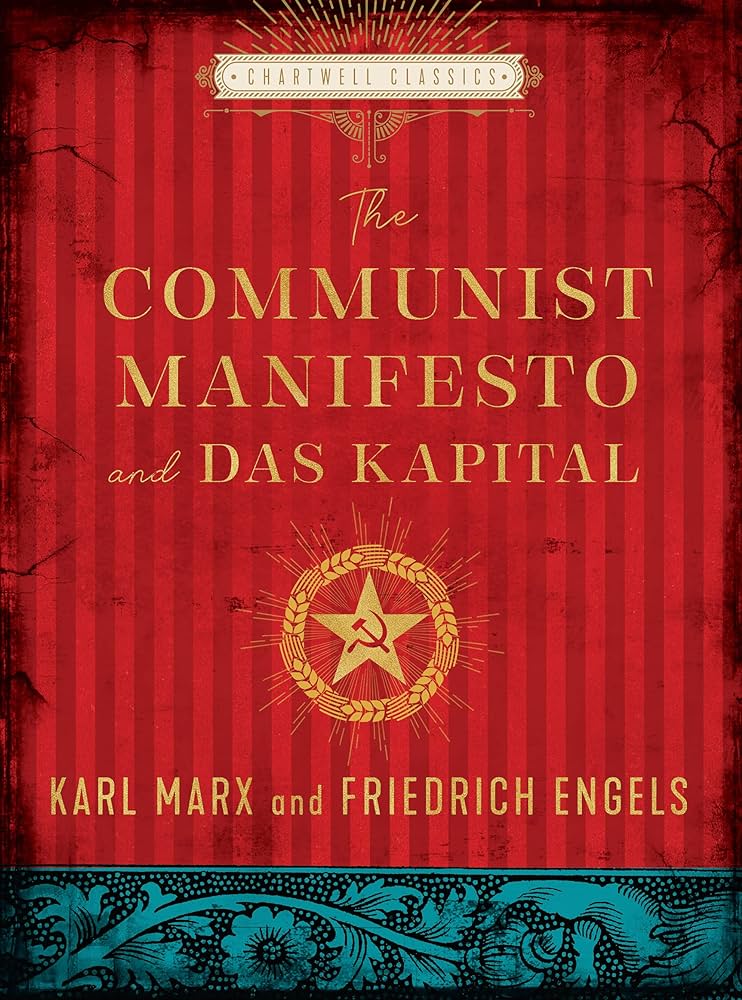Das Kapital Vs Communist Manifesto
Das Kapital focuses on economic theory and analysis, while Communist Manifesto outlines communist ideology and political goals. Both works by Karl Marx offer insights into social structures and class struggles, shaping Marxist thought.
Das Kapital delves deep into capitalism’s inner workings, highlighting exploitation, labor, and surplus value. On the other hand, Communist Manifesto presents a call to action for the working class to rise against oppressive capitalist systems. These seminal texts remain influential in political and economic discourse, sparking debates on capitalism, socialism, and societal organization.
Understanding the key differences and similarities between Das Kapital and Communist Manifesto provides valuable perspectives on Marxist theory and its impact on modern society.

Credit: www.flickr.com
Key Concepts
In the world of Marxist theory, Das Kapital and The Communist Manifesto are two seminal works that delve into the core principles of communism. Let’s explore the key concepts presented in these influential texts.
Labor Theory Of Value
The Labor Theory of Value is a fundamental concept in Marxist economics, asserting that the value of a commodity is derived from the labor required to produce it.
Class Struggle
Class Struggle refers to the ongoing conflict between the proletariat (working class) and the bourgeoisie (capitalist class) over the control of resources and means of production.
Analysis Of Capitalism
When it comes to analyzing capitalism, both Das Kapital and Communist Manifesto delve into the economic exploitation and alienation of labor that occur within the capitalist system.
Economic Exploitation
The concept of economic exploitation is a central theme in both Das Kapital and Communist Manifesto. Karl Marx, in Das Kapital, extensively discusses how the capitalist mode of production exploits the labor force to generate surplus value, leading to the accumulation of capital by the bourgeoisie. Similarly, in the Communist Manifesto, Marx and Engels highlight the exploitation of the working class by the bourgeoisie, emphasizing the unequal distribution of wealth and the extraction of surplus value from the labor of workers.
Alienation Of Labour
The alienation of labor under capitalism is a fundamental concept explored in both Das Kapital and Communist Manifesto. Marx, in Das Kapital, discusses how the capitalist mode of production leads to the estrangement of workers from the products of their labor, from the production process itself, from their fellow workers, and from their own human potential. This alienation is further emphasized in the Communist Manifesto, where Marx and Engels highlight the dehumanizing effects of capitalism, leading to the loss of individuality and creativity among the proletariat.
Role Of The Proletariat
The role of the proletariat, or the working class, is a central theme in both Das Kapital and Communist Manifesto. While both texts were written by Karl Marx, they have different focuses and perspectives on the revolutionary potential of the working class.
Revolutionary Potential
In Communist Manifesto, Marx argues that the proletariat has the revolutionary potential to overthrow the ruling class and establish a communist society. He sees the proletariat as a class that is oppressed by the bourgeoisie and exploited for their labor. This exploitation creates a sense of unity among the working class, and as they become aware of their shared struggles, they will rise up and overthrow the bourgeoisie.
Das Kapital, on the other hand, focuses more on the economic and social structures that perpetuate this exploitation. Marx argues that the working class is not inherently revolutionary, but rather that their exploitation by the bourgeoisie creates the conditions for revolution.
Overthrow Of Bourgeoisie
Both texts agree that the ultimate goal of the proletariat is to overthrow the bourgeoisie and establish a communist society. In Communist Manifesto, Marx describes the process of revolution as a violent struggle between the proletariat and the bourgeoisie. He argues that the bourgeoisie will not give up their power willingly, and that the working class must use force to overthrow them.
Das Kapital takes a more nuanced view of this process, describing the ways in which the bourgeoisie maintain their power through economic and social structures. Marx argues that the working class must organize and use their collective power to dismantle these structures and create a new society.
Conclusion
Overall, both Das Kapital and Communist Manifesto emphasize the important role of the proletariat in the struggle for social and economic justice. While they have different perspectives on the revolutionary potential of the working class, they both agree that the overthrow of the bourgeoisie is necessary to create a more equitable society.

Credit: www.reddit.com
Views On Socialism
Socialism is a key concept in both Das Kapital and the Communist Manifesto, offering insights into the transition to communism and the vision of a stateless society.
Transition To Communism
Marx’s Das Kapital emphasizes the inevitability of socialism as a transitional phase to communism. It advocates for the collective ownership of the means of production, which is essential for the elimination of class distinctions and the establishment of a classless society.
Stateless Society
The Communist Manifesto envisions the ultimate goal of a stateless society where the government becomes obsolete, and individuals govern themselves. This concept aligns with the belief that in a truly communist society, there will be no need for a centralized authority.
Comparison Of Goals
When comparing the goals of Das Kapital and the Communist Manifesto, it’s important to consider the long-term vision and immediate objectives outlined in each work. The two texts, authored by Karl Marx, share the common goal of addressing the issues of capitalism and advocating for a classless society. However, they differ in their specific aims and strategies. Let’s delve into the comparison of goals between these influential pieces of literature.
Long-term Vision
Das Kapital aims for the establishment of a classless society where the means of production are collectively owned, leading to the dissolution of the capitalist system. It envisions a society where the exploitation of the working class is eliminated, and wealth is distributed equitably among all members of society. On the other hand, the Communist Manifesto also advocates for a classless society, emphasizing the eventual disappearance of the bourgeoisie and the proletariat, resulting in a stateless and classless society.
Immediate Objectives
In Das Kapital, the immediate objective is to expose the inherent contradictions and exploitative nature of capitalism, highlighting the need for revolution and the establishment of a socialist system. It focuses on analyzing the economic mechanisms underlying capitalism to galvanize the working class into action. Conversely, the Communist Manifesto outlines immediate objectives such as the abolition of private property, centralization of the means of production, and the implementation of progressive taxation and free education for all.

Credit: www.quarto.com
Influence And Legacy
Das Kapital and Communist Manifesto are two of the most influential works of Karl Marx that have shaped the course of history. These books have played a significant role in the development of socialist and communist ideologies, inspiring many political movements and revolutions across the world. In this article, we will explore the impact and relevance of these works on political movements and contemporary society.
Impact On Political Movements
The impact of Das Kapital and Communist Manifesto on political movements has been profound. The works have inspired socialist and communist movements across the world, including the Russian Revolution of 1917 and the Chinese Revolution of 1949. Marxist ideas have influenced many political leaders and organizations, including Fidel Castro, Che Guevara, and the Sandinistas in Nicaragua.
Marx’s theory of class struggle and the exploitation of the working class has been a rallying cry for socialist and communist movements. The works have also influenced the labor movement, trade unions, and socialist parties across the world. The ideas presented in these works have been a source of inspiration for many anti-colonial and anti-imperialist struggles in the Global South.
Relevance In Contemporary Society
The relevance of Das Kapital and Communist Manifesto in contemporary society cannot be overstated. The works continue to inspire political movements and revolutions across the world. The ideas presented in these works are still relevant today, especially in the context of increasing economic inequality and the concentration of wealth in the hands of a few.
The works have also influenced critical theory, postcolonial theory, and feminist theory. Marx’s concept of alienation and the commodification of labor has been a central theme in many critical and cultural studies. The works have also influenced the development of environmental and ecological movements, with Marx’s critique of capitalism as a system that is inherently destructive to the environment.
In conclusion, Das Kapital and Communist Manifesto are two of the most influential works of Karl Marx that have had a profound impact on political movements and contemporary society. The works have inspired socialist and communist movements across the world and continue to be relevant today, especially in the context of increasing economic inequality and environmental degradation.
Conclusion
Both “Das Kapital” and “Communist Manifesto” offer valuable insights into economic systems. Understanding their differences can enrich our perspectives on capitalism and communism. By exploring these texts, we can gain a deeper understanding of the complexities of societal structures and the implications of economic ideologies.







